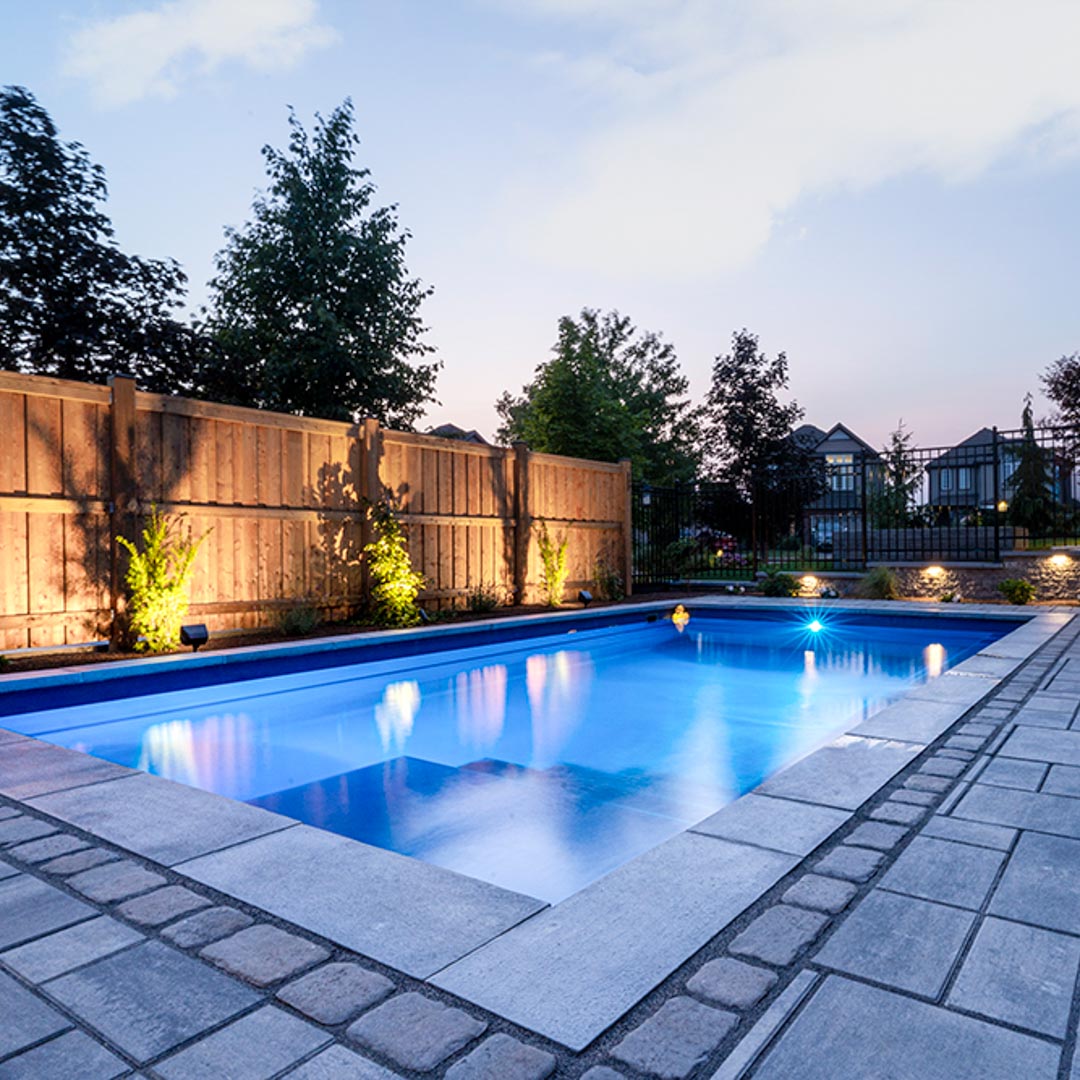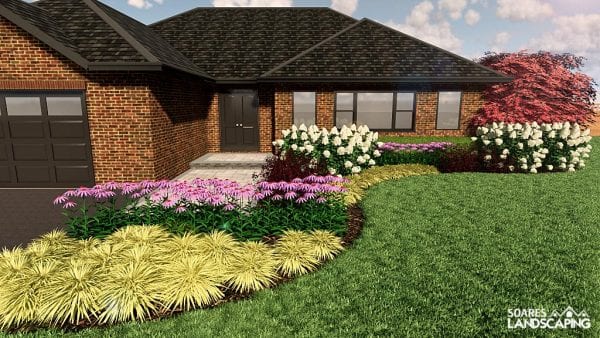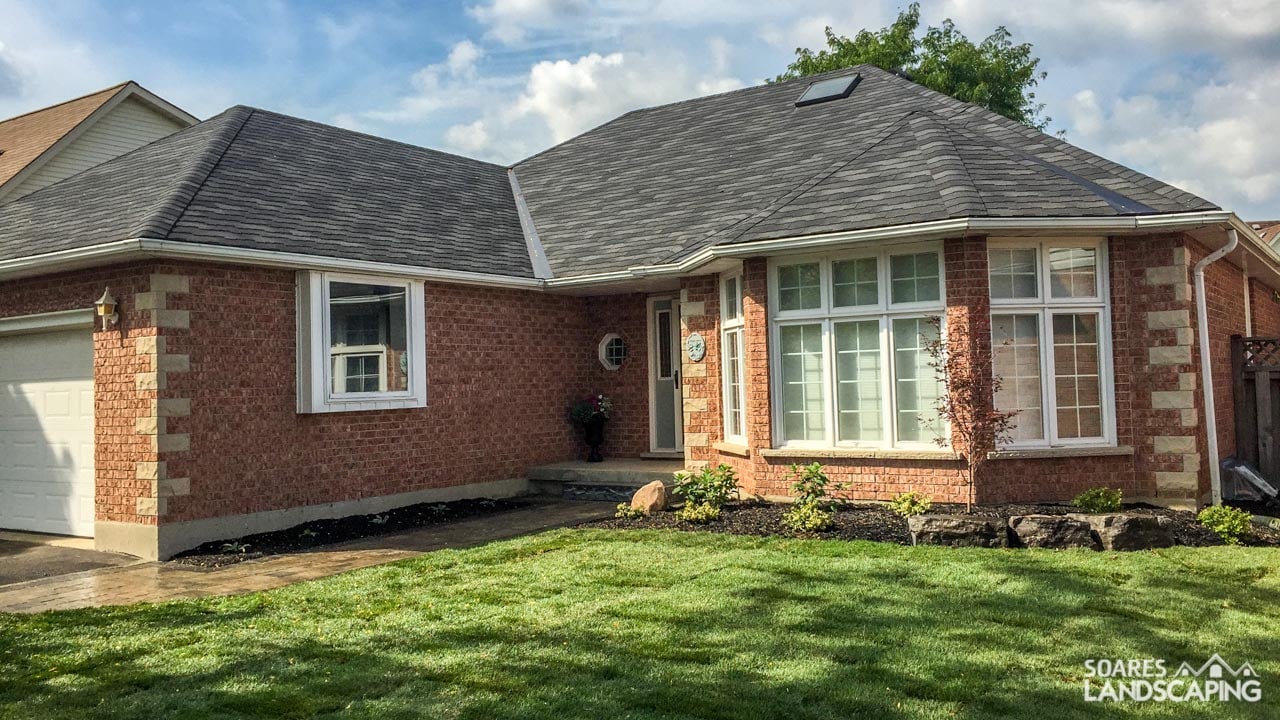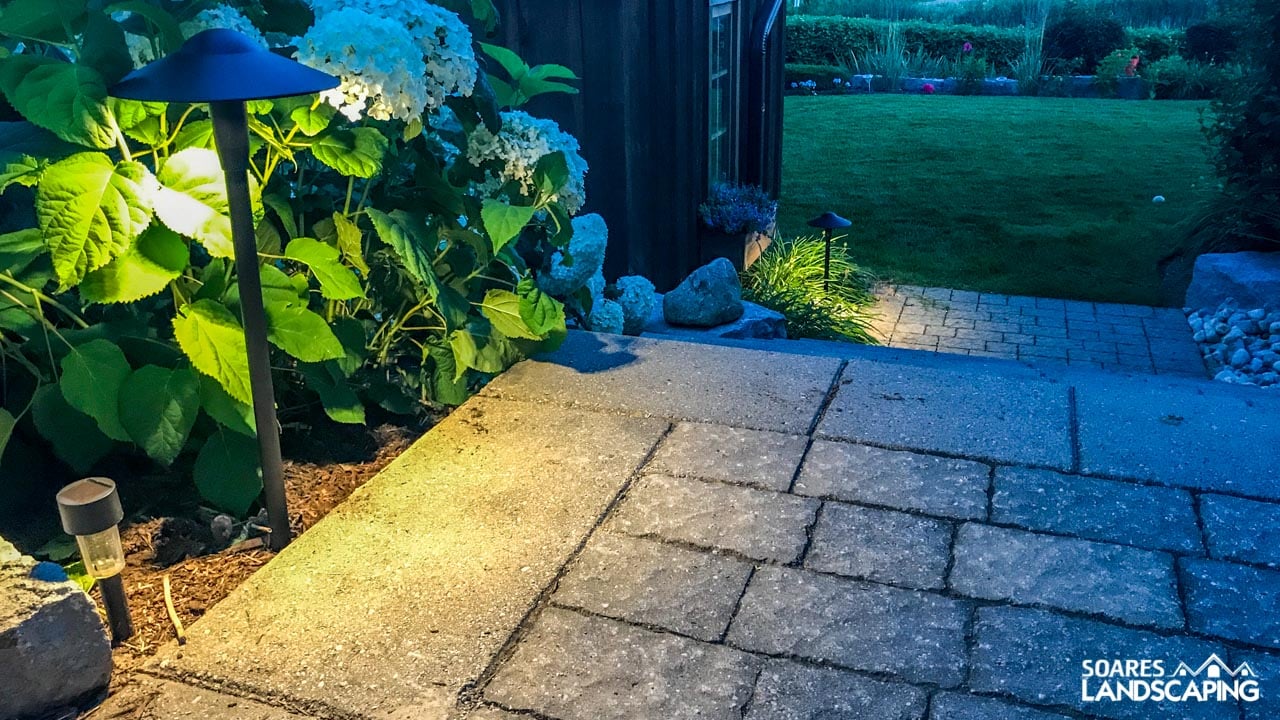How Much Does Landscaping Cost in Ontario (2025) Updated
- Resources
- Cost & Pricing Guide
When clients reach out to our company, one of the first things they ask is: How much does landscaping cost in 2025?
Landscaping Costs Are Like Buying a Car or Computer
Purchasing landscaping features is similar to buying a car or computer—prices can vary greatly depending on the options you choose. Just as a base model car starts at one price but can increase with upgrades, landscaping costs grow depending on the features you select. Homeowners often opt for additional features that enhance the long-term experience, just as car buyers upgrade for comfort. So, how much does it cost for landscaping? The key is investing wisely to get the best value and enjoyment out of your landscape.
The Role of Upgrades in Your Decision
Upgrades in landscaping, such as choosing better materials or custom features, improve both function and beauty. While they cost more upfront, they provide long-term enjoyment, reduce maintenance, and add value to your home. When asking, "How much does landscaping cost?" it's important to remember that upgrades often influence the final price and return on investment.
Landscaping Decisions: The Same Principle Applies
Just like purchasing a car, landscaping decisions require careful consideration of your needs and preferences. Choosing the right features for your yard is crucial to ensuring long-term satisfaction. Small details, like selecting durable materials or adding thoughtful design elements, can significantly impact the overall enjoyment of your outdoor space. Investing in quality from the start saves you from costly changes later, allowing you to enjoy your landscape for years without needing frequent adjustments. When asking how much does it cost to do landscaping, remember that making informed choices now can save you in the long run.
The Importance of Professional Guidance
A professional landscape designer helps bring your vision to life while considering factors like durability, maintenance, and cost. Their expertise ensures you make smart choices, avoid mistakes, and create a lasting, functional outdoor space.
The Pitfall of Focusing Only on the Initial Price
Focusing solely on the initial cost of landscaping can lead to poor decisions. Choosing the cheapest contractor often means sacrificing quality, design, and warranty, which can result in dissatisfaction later. Unlike a car, you can't simply trade in your landscape—if you're unhappy, fixing it could cost you three times more than getting it right the first time. Prioritizing long-term value and quality over upfront savings ensures a better investment in your home. When considering how much does landscaping cost, always factor in the quality and durability of the work.
Frequently Asked Questions
Q: Where can I find landscaping services near me in Ontario?
A: Soares Landscaping Inc. is located at 98 Huck Crescent, Kitchener, ON N2N 0A4. To help you find this location, here are some nearby landmarks:
- Sandhills Public School: Approximately 0.8 km away.
- St. Dominic Savio Catholic Elementary School: Approximately 1.1 km away.
- Westheights Public School: Approximately 1.8 km away.
- Resurrection Catholic Secondary School: Approximately 1.3 km away.
- Forest Heights Collegiate Institute: Approximately 2.4 km away.
These educational institutions are in close proximity to 98 Huck Crescent, making them useful reference points when navigating to Soares Landscaping Inc.
Q: What landscaping packages do you offer in Ontario?
A: You can choose from packages like the Garden Design Package, Garden & Hardscaping Design Package, and Pool Area Landscaping Package. Visit the Landscaping Packages page for more details.
Q: What is most cost-effective for landscaping in Ontario?
A: Using locally sourced materials, simple designs, and low-maintenance plants can be the most cost-effective options for landscaping.
- Patios & walkways
- Outdoor lighting
- Gardens
- Fire pits
- Fireplaces
- Driveways
- Outdoor Kitchens
- Pergolas
- Pavillions
- Covered porches
- Decks
- Fences
- Irrigation
- Pools
- Hot tubs
- Swim spas
As you may notice, there are many options. When someone receives their completed landscape design from our company, we thoroughly assess each item to ensure the homeowner understands the benefits.
Areas We Serve
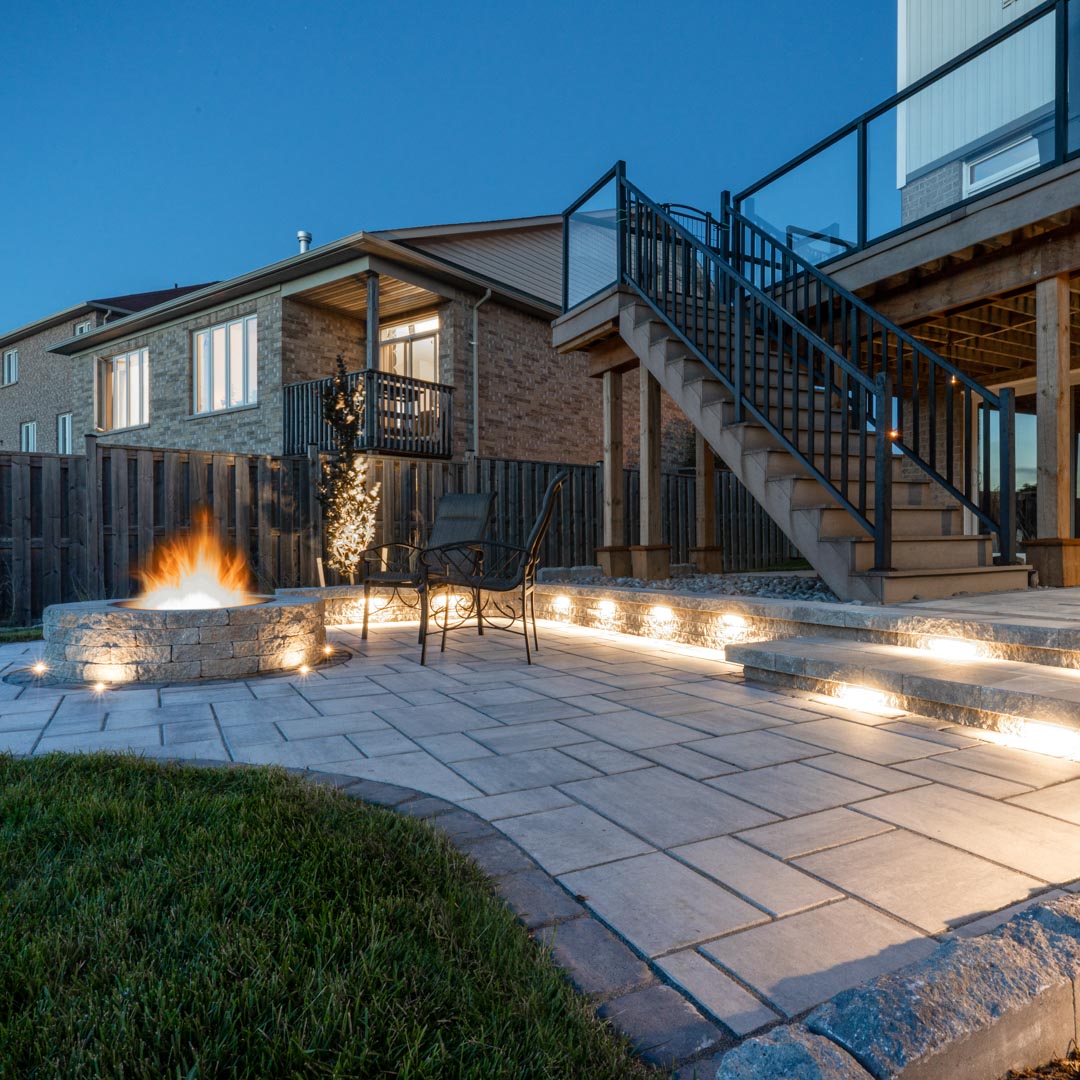
How much does landscaping cost in 2025?
The average price of a landscaping project is $25,000-$75,000.
How do materials affect the cost?
A misconception about landscaping is that material prices can vary significantly. Leading homeowners to believe they want the cheapest option. While there is undoubtedly a price difference between various landscape materials, the most significant factor is the difference in labour some materials require to install.
For example, installing a project in a backyard with no machine access can add 20-40% more labour time than in a yard with machine access. With labour affecting 60-80% of the total cost, this scenario alone could increase the price of your project.
Some of the best landscaping companies will have robust estimating systems that account for factors that affect the amount of labour required in a project.
How material choices compare to others
There are a few categories in the landscape space that have competing options. Here are a few of them and their differences:
Pavement
Asphalt: An inexpensive option for a driveway when there is no particular interest or design intent for something different. Typically only lasts about ten years. Similiar to asphalt roof shingles. An average two-car asphalt driveway will cost $3,000-$5,000.
Concrete: While brushed concrete (white sidewalk look), doesn’t have much aesthetic improvement than asphalt, its lifespan can last 20-30 years if maintained well. The same applies if you install coloured concrete instead.
Additionally, options such as exposed aggregate or stamped concrete are quite popular. Both of these options can be slippery when wet and aren’t recommended around pools or accessibility areas.
A word of caution towards stamped concrete, some homeowners have experienced issues with the colour at the surface wearing away within five years. Be prepared to clean and seal stamped concrete every 1-2 years for maximum protection.
Two downsides to concrete are the limited design options and the simple fact that concrete will eventually crack with no ability for repair (except in a few scenarios).
Pavers: The most versatile pavement, pavers have an enormous selection of sizes, shapes and colours available. There are many manufacturers of pavers, and there is something for everyone.
A downside to pavers is their expense. It can cost 60-90% more than concrete.
A significant benefit to pavers is that maintenance can be performed. Often the pavers themselves will have a lifetime warranty from the manufacturer, and if an area needs to be repaired, lift & relay that problem area.
Natural Stone: Do you want a natural feel? Natural stone is your option. Natural stone installed typically costs 5-10% more than its paver counterpart.
While there is no warranty on the natural stone itself, it is often incredibly dense and will be going nowhere.
Wood Decks: When it comes to raised areas, there is no better option than decks. Compared to a raised paver/stone patio, a deck will cut the budget in half.
A downside to wood decks is that they cannot be built below 24 inches off the ground as they are susceptible to high moisture levels that will degrade the wood over time.
In general, unless stained regularly, wood decks may only last approximately 15-20 years.
Composite Decks: The Mercedes of decks, composite offers wood feel without the organics that break down. They are often made out of recycled materials, and they have a great selection of colours available.
Compared to wood decks, composite will typically have a 25-50% price increase.
